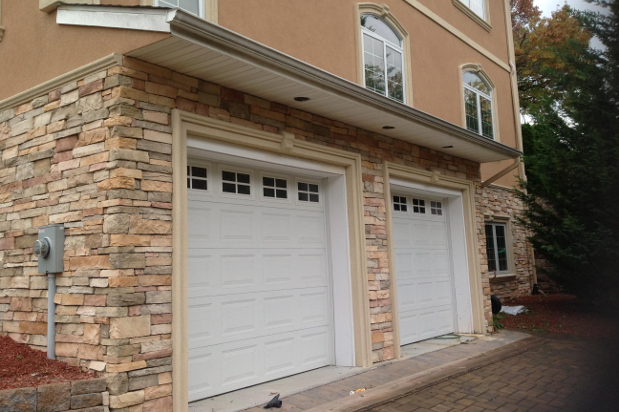
When it comes to masonry choices, the three most popular are slump stone, new brick, and manufactured alternatives.
Bricks
Brick is made of fired clay and comes in hundreds of different colors. Considered by many to be the ultimate exterior wall finish, brick contains many advantages.
Readily available most everywhere with thousands of varieties to choose, brick is one of the most durable building materials. In fact, brick masonry should last 100 years, with the first 25 years completely maintenance-free.
Brick also won’t catch fire, rot or be eaten by termites.
It can be one of the higher-priced exterior finishes; however, many homeowners prefer brick because, due to its durability, it’s less expensive in the long run.
Stone
Stone is another attractive, durable and expensive choice. An antique form of masonry, stone will last a lifetime. Just check out all the Greek and Roman monuments still standing today!
Unfortunately, stone isn’t as available as brick, and not every stone works for masonry work. Some types of stone are too soft, and others are too porous.
Stone exteriors also work best when installed with old-fashioned techniques.
Water is stone masonry’s worst enemy because freeze-thaw cycles can cause cracks. Properly sealed stone masonry prevents problems.
Every year, check your building’s masonry exterior four hours after a heavy rainstorm. Any dark patches on the wall means that water soaked into the surface. This is a future problem that will need fixing.
Ready to start your Brick or Stone Project?
Find ProsManufactured Brick and Stone
There is a third alternative to brick and stone which contains all of the above advantages at a lower cost.
Many times what appears to be stone or brick on a house is actually a lightweight concrete-manufactured stone veneer or cultured stone.
A mixture of Portland cement, natural aggregates and iron oxide pigments is poured into molds made from real stones. The result, available in a broad palette of colors and styles, looks incredibly realistic.
Architectural blocks are another attractive, virtually indestructible option. These are essentially the same as conventional concrete blocks, except they resemble polished granite, look like hand-hewn stone or tile or have other decorative finishes.
Concrete block masonry is more common with industrial buildings. It should last 50 to 80 years, and you’ll need to fix the joints after 25 years.
Unlike brick, concrete blocks are not waterproof. You’ll need to apply a water seal every 10 years.
The best water seals are silane and siloxane. You can apply them by spray, and they soak into the surface of the wall like stain.
Common Masonry Problems
- Bulges in concrete come from excessive pressure on the back side of a wall.
- Concrete cracks happen because of horizontal or vertical stress to a masonry surface. (This is why rebar is used to strengthen concrete.)
- Discoloration is caused by water penetration or is an indication that water is entering but evaporating.
- Deteriorating mortar joints are generally due to age or water penetration.
- Leaning walls are usually due to a lack of sufficient footing (additional concrete added to the bottom of a wall to strengthen it) or to more horizontal pressure at the top of the wall than at the bottom.
- Brick, stone or blocks come apart from age and deterioration of mortar between masonry units.
- Sinking or settling in masonry is due to improper compaction of soil beneath the masonry or improper drainage around masonry.
- Leaching water is moisture that slowly finds its way through the masonry wall via cracks, holes and mortar joints, usually because of improper or deteriorating waterproofing.
 Brick Veneer Siding
Brick Veneer Siding  How to Find & Hire a Masonry Contractor
How to Find & Hire a Masonry Contractor  Stone & Granite Fabricators
Stone & Granite Fabricators  Marble Floors: Elegant but Not Exclusive
Marble Floors: Elegant but Not Exclusive  Repairing Masonry
Repairing Masonry 

Are You Familiar With This Topic? Share Your Experience.